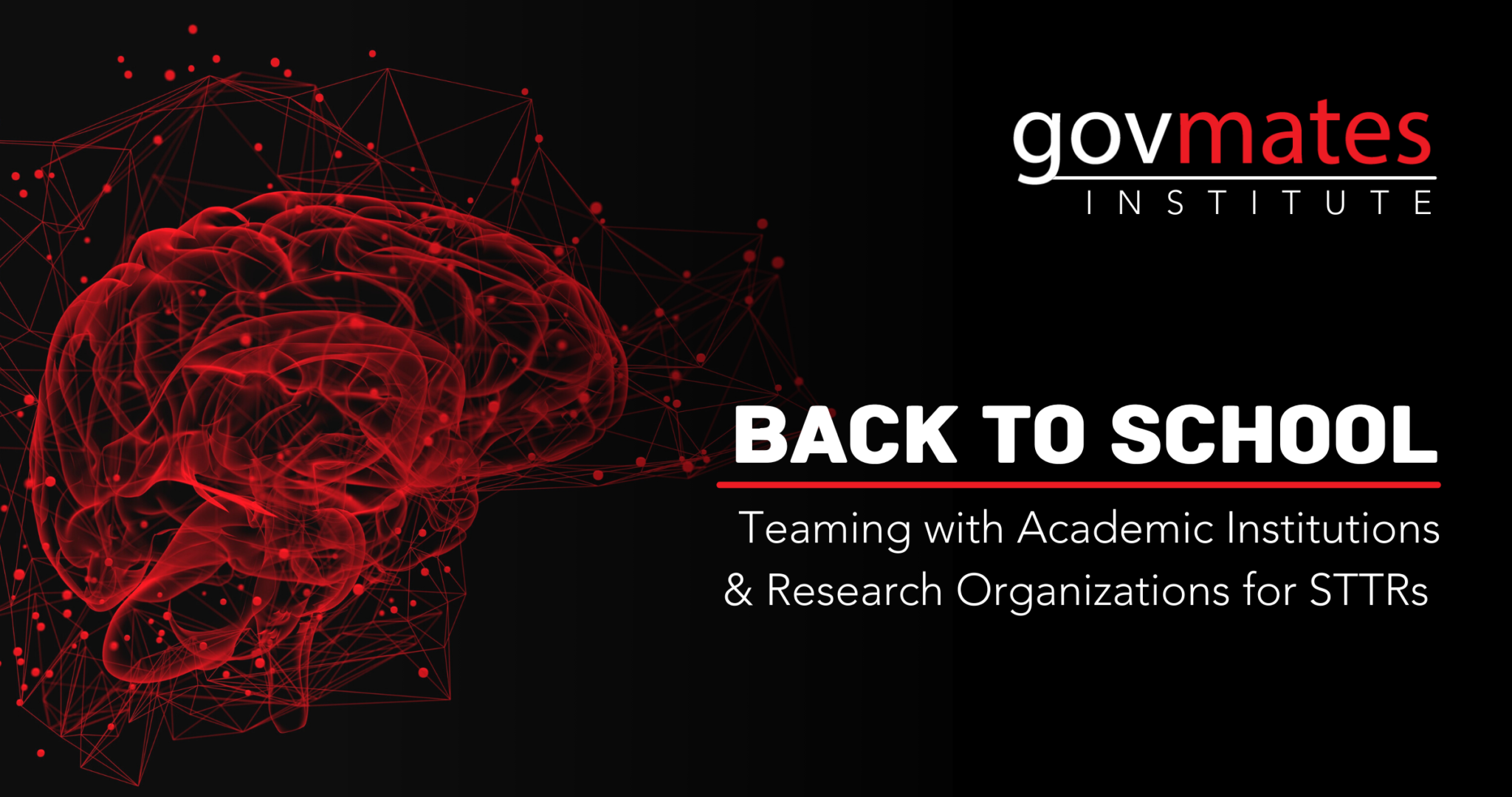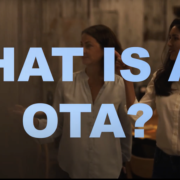Recap: Back to School | Teaming with Academic Organizations and Research Institutions
On September 16, 2021, govmates hosted a virtual panel event to discuss teaming with academic organizations and research institutions through the Small Business Technology Transfer (STTR) program. Our panelists included Sidney Chocron, R&D Manager at the Southwest Research Institute, Matt Barsotti, Principal at Protection Engineering Consultants, David Stevens, Principal Engineer at Protection Engineering Consultants, and Ted Reutzel, Director of Center for Innovative Materials Processing at The Applied Research Laboratory at Penn State University. Mr. Chocron and Mr. Reutzel offered their views as members of large research institutions with STTR experience, while Mr. Barsotti and Mr. Stevens provided the perspective of a small business that has successfully completed STTR awards.
Why choose to pursue an STTR?
The STTR program is different from other federal opportunities in that the end customer is not looking for a product or service, rather a problem to be solved. STTRs are research-heavy and have aggressive timelines. Small businesses may choose to pursue an STTR because it allows the company to develop new skills and capabilities.
The program offers an avenue for both the small business and the research institution to explore a niche R&D priority. A research institution can get substantial funding if a project moves from Phase I to Phase II. Academic institutions specifically are excited about the opportunity to involve graduate students and further their research goals.
How do I find a teaming partner?
It typically falls on the small business to find a teaming partner. The right teaming partner may be an institution with access to specialty equipment, or a university with plenty of graduate students to spare for the project. The small business must consider their own capability gaps and requirements before reaching out to prospective partners.
As our panelists emphasized, it is so important for the small business to go to the research institution with a clear plan and an open mind. The small business is usually the lead on the project; they must come to the table with the motivation and drive to win while still allowing their team members to be full and equal partners.
How does the teaming partnership work?
Finding the right partner is not easy. Our small business panelists emphasized that it is important to find a partner willing to work on your timeline. STTRs often move fast, sometimes requiring work to start before an agreement is official. Universities and other research institutions are also allowed to work on multiple Phase I proposals at once. There may be multiple companies vying for the attention of a single research institution; that institution can work with as many or as few as feels appropriate.
What other advice do you have for companies interested in pursuing an STTR?
- If possible, talk to the STTR technical point of contact (TPOC) about the solicitation. Find out what the end customer wants and why they chose to go through the STTR program. This will help focus and refine the research priorities.
- Intellectual property agreement negotiations can take a long time, especially when dealing with a university. Start working on an IP agreement as soon as possible to ensure everything is in place by the STTR due date.
- Ensure that all parties are happy with the workshare agreement. Teams should have complementary skillsets and clearly defined tasks with an agreed-upon timeline. Partnerships that work well together have a better chance of winning a Phase II award!
Pursuing an STTR and need a teaming partner? Contact us at matchmaker@govmates.com today!
Author: Hannah Altman, Program Analyst





